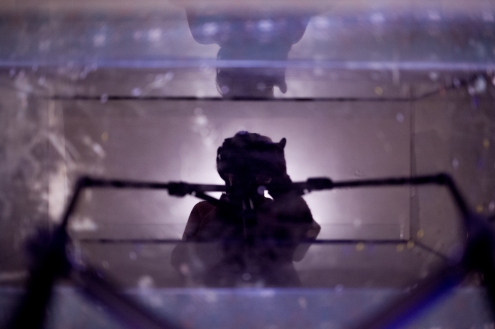Plankton; Vital to life
In the vast, mysterious world beneath the sea there are microscopic organisms so small that they look like specks of dust. Drifting along on the ocean currents, these organisms are known as plankton, from a Greek word meaning ocean drifters. Plankton have existed for millions of years, scientists have traced their origins back to the beginnings of life. Despite their insignificant appearance, these minute organisms play a vital role in sustaining life on Earth, both in the oceans and on land. Occupying the lowest level of the marine food chain, they are crucial in supporting all sea life further up the chain. Through the process of photosynthesis, they are also one of planets main sources of oxygen; incredibly, they generate more oxygen than the trees and plants that grow on land.
Threat to life
In an interesting twist, one of the by-products of plankton is now endangering those same marine species that plankton have sustained for millennia. Crude oil, produced by the compression of prehistoric plankton, is a key component in the manufacture of plastic. And plastic is now a serious threat to marine life. Named after the Greek word plastiko, meaning a material that can be moulded, plastic finds its way into the oceans in the form of vast quantities of waste. Here, it breaks up into particles but does not disappear. Marine species mistake these particles for their normal food source – plankton – and the imposter plankton then work their way up the food chain with fatal effects.
About the project
In this series, these plastic ocean invaders are playfully formed to imitate exact plankton species. The replicas are presented as if they are a new species, reflected in the names of the photographs in which the type of plastic used and the plankton’s name are morphed into one word. To learn about the making of this project, please visit the bottom of the page.
The world of plankton is complex and fascinating, this project has been motivated by a curiosity about the diverse species with whom we share our planet, and by a desire to preserve their environment.
PSEUDOTHANE
AURELLENE
POLYAGIA
OCEANIA ARMATHYLENE
MIDUSA
CNIDYLENE
COPELENES AND ETHYTOMS
POLYEPOD
POLYLARIANS
NYLIVIDUS
URCHYLONS
SPIRALYONS

DIATOPYLENE
POLYPLANKTON
The making of
The project began with researching plankton; meeting marine scientists at Glasgow University, visits to the Glasgow Museum Resource Centre to view old plankton specimens, and then a visit to the Scottish Association for Marine Science where living plankton specimens are kept and studies are made on the effects of plastic in nearby waters. Water colour and mixed media visual interpretations were made to consider the colourful forms of plankton. To collect the materials, rubbish was gathered from beach cleans around the Firth of Clyde, where plastic waste often gets channelled and trapped. Replicating plankton required extensive experimentation, including creating bioplastics, making plastic slime, producing moulds for casting resin and sculpting silicone, melting plastics and setting plastics in jelly. The objects were then photographed in a lighted fish tank filled with water, with photographic challenges of weight, depth and movement.
TANK SET-UP
NURDLES (from FIDRA) and plastic debris collected from beach cleans around the Firth of Clyde
LIVING PLANKTON SPECIMENS (ALGAE), THE SCOTTISH ASSOCIATION FOR MARINE SCIENTISTS
HISTORIC PLANKTON SPECIMENS, THE GLASGOW MUSEUM RESOURCE CENTRE
Above 3 images © CSG CIC Glasgow Museums Collection
MIXED MEDIA ON CARD
WATER-COLOURS
Mysids
Young Nudibranch
Dragonet Larva

































